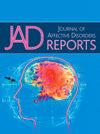羞耻感的网络途径:不同年龄样本中自我批评、自我同情和自我宽恕的核心作用
Q3 Psychology
引用次数: 0
摘要
羞耻感作为一种复杂的、全球性的自我意识情绪,在心理健康中起着重要的作用。自我批评是产生包括羞耻感在内的负面情绪的关键因素,而自我同情和自我宽恕可以减轻自我批评和羞耻感的影响。本研究使用网络分析模型来检验这些心理构念的共存。方法采用方便抽样的方法,对474名年龄在13岁至73岁之间的伊朗居民进行抽样调查。变量的评估采用外部和内部羞耻量表(EISS)、自我同情量表简表、自我批评水平量表和心脏地带宽恕量表(HFS)。结果我们使用图形高斯模型(GGM),使用qgraph、bootnet R包可视化多重相关性,并使用桥接中心性度量以及基于置换的稳定性测试和bootstrap重采样来分析网络的结构和稳定性。网络分析显示,代表内化自我批评(IC)、比较自我批评(CC)和自我宽恕(SF)的节点表现出最高的桥梁强度,表明它们在维持网络连通性方面起着关键作用。该网络的稳定性得到了稳健CS系数0.517的证实,确保了这些发现的可靠性。结论该网络分析提供了对羞耻、自我批评、自我同情和自我宽恕之间关系的精确理解。在本研究中,比较自我批评和内在自我批评成为调节和产生羞耻感的关键因素。比较自我批评似乎在羞耻感的表现中起着更决定性的作用。本文章由计算机程序翻译,如有差异,请以英文原文为准。
A network approach to shame: The central roles of self-criticism, self-compassion and self-forgiveness in an aged-diverse sample
Background
Shame, as a complex and global self-conscious emotion, plays a significant role in mental health. Self-criticism is a crucial factor in generating negative emotions, including shame, while self-compassion and self-forgiveness can mitigate the effects of self-criticism and shame. The present study examines the coexistence of these psychological constructs using a network analysis model.
Methods
A diverse sample of 474 Iranian residents, comprising men and women aged 13 to 73, participated in this study through convenience sampling. Variables were assessed using the External and Internal Shame Scale (EISS), the Self-Compassion Scale Short Form, the Levels of Self-Criticism Scale, and the Heartland Forgiveness Scale (HFS).
Results
We utilized a Graphical Gaussian Model (GGM) with polychoric correlations visualized using the qgraph, bootnet R packages and employed bridge centrality metrics along with permutation-based stability tests and bootstrap resampling to analyse the network's structure and stability. The network analysis revealed that nodes representing internalized self-criticism (IC), comparative self-criticism (CC), and self-forgiveness (SF) exhibited the highest bridge strength, indicating their critical roles in maintaining network connectivity. The network's stability was confirmed with a robust CS coefficient of 0.517, ensuring the reliability of these findings.
Conclusion
This network analysis provides a precise understanding of the relationships between shame, self-criticism, self-compassion, and self-forgiveness. In this study, comparative self-criticism and internal self-criticism emerged as critical factors in the regulation and generation of shame. Comparative self-criticism appears to play a more decisive role in the manifestation of shame.
求助全文
通过发布文献求助,成功后即可免费获取论文全文。
去求助
来源期刊

Journal of Affective Disorders Reports
Psychology-Clinical Psychology
CiteScore
3.80
自引率
0.00%
发文量
137
审稿时长
134 days
 求助内容:
求助内容: 应助结果提醒方式:
应助结果提醒方式:


